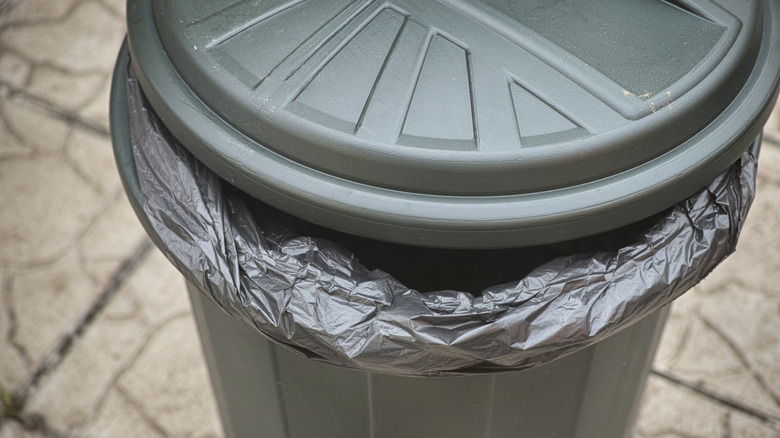Why Your Old Trash Can May Be The Key To Pest-Free Bird Feed Storage
We may receive a commission on purchases made from links.
Anyone who regularly feeds backyard birds knows what a struggle it can be to keep unwanted pests out of your bird feeder. Diligently cleaning up fallen seed around your feeders may do little good if the seed itself is stored improperly. Hungry rodents, for example, will chew through almost anything, including the flimsy plastic or paper bag your store-bought bird feed is packaged in. If a bag looks like Swiss cheese — that is, full of holes — chances are that pests have gotten to it. To save your precious bird feed (and ultimately, to save money), always store the bag in a sealed container. You don't necessarily have to spend money on a new container to store bird feed, either. All you need to keep out pests is an unused trash can with a tight-fitting lid.
When handling bird feed, the more barriers you set up to stop pests, the better — at every stage of the bird feeding process. Accessible bird feed attracts all sorts of unwanted creatures, including mice, squirrels, deer, rats, chipmunks, racoons, and insects. Most trash cans are made from sturdy plastic or metal that will deter even the most tenacious pests. Few can chew or claw their way through these materials easily. Storing bird feed in a sealed container — like repurposing an old trash can in and outside of your home — may keep it moisture-free, too, prolonging its life.
How to use an old trash can for bird feed storage
You can use an old trash can to store bird feed, but there are some tricks for best success. First, if the bin isn't new, clean it thoroughly. Some of the best ways to clean and deodorize your trash can include washing it with dish soap, vinegar, antibacterial wipes, or bleach. Don't mix these products together — choose one product and stick with it. A trash can with a flip-style lid won't work. If you can easily open the lid, a rat, squirrel, or raccoon probably can, too. Instead, use a trash can with a lid that seals tightly, like this LovingStar 32-Gallon Heavy-Duty Black Plastic Garbage Can with a click-lock lid and sturdy handles. The trash can should be able to hold at least five gallons to accommodate most bird feed bags. Repurposing that countertop bathroom vanity bin is out of the question.
Placement of the bird feed-filled trash can is another important consideration. While the container itself acts as a barrier against pests, you don't want to leave it outside, pushed up against the wall of your house. It gives rodents and other four- or six-legged pests somewhere to hide as they attempt to get into the bin. A dry, temperature-stable garden shed or garage with a lockable door is the better choice. Regularly inspect the trash can for chew marks, especially around the rim of the lid and the base. If you see nibbles, get a sturdier container for the bird feed and possibly reconsider where it's being stored.

